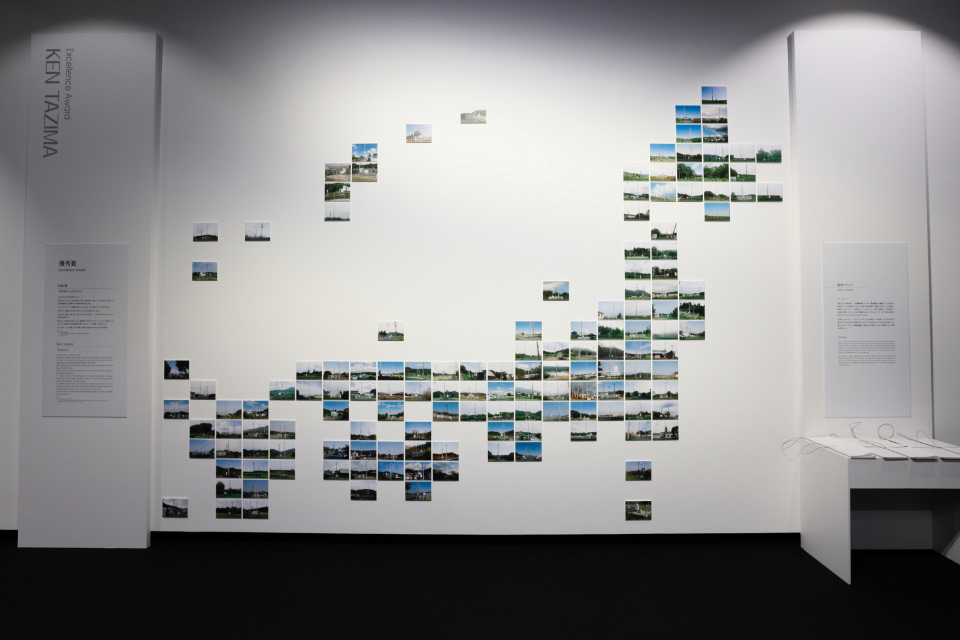PRESENTATION
Weather observations occupy a very important position in our lives. Japan's Meteorological Agency maintains meteorological observatories in each area of the country where meteorologists carry out various measurements and observations. There are, however, only a handful of meteorological observatories. For this reason, the Meteorological Agency has created a nationwide observation network that gathers data online from over 1,000 unmanned AMeDAS weather observation installations and a few manned weather measurement stations somewhat smaller in scale than the meteorological observatories.
For this collection, I made my way to all of the unmanned weather observation installations and captured them in photos. Each installation has nearly always the same configuration. The post is topped with a combination anemoscope / anemometer, below which are a heliograph, a thermometer, and a rain gauge. Some locations consist of just a rain gauge on its own. This is because the rain observation network is slightly finer than those for temperature or wind. Some installations in the north of the country have snow gauges attached.
My inspiration was quite trivial. I happened to live at the time close to the meteorological observatory in Matsue, Shimane prefecture. That coincidence led me to wonder how weather data was sent from towns without a meteorological observatory. I became curious about what kind of locations weather measurements are made in. This prompted me to visit a nearby unmanned weather station, and I was surprised by how small the installation was and how it was squeezed into a tight space. That piqued my interest as to what the other stations were like. I went to the Oda weather station, also in Shimane, and discovered it was placed in a park in the middle of a residential area. I thought to myself: “There must be so many more interesting places if I were to travel and see all the stations in the country.” That thought inspired me to traipse all over the country: from the northernmost station on the Souya Cape to the southernmost station on Hateruma island, from the highest station at 2,195 meters on Mount Ontake to the lowest station three meters below sea level in Ogata, Akita prefecture.
I was able to get to most stations by car. But there were places that were very hard to reach, some due to extremely narrow trails or being on an island accessible only twice a week by boat. What surprised me the most was, without fail, that there were people living in all of these places. These encounters strengthened my resolve during my travels to visit every station no matter how demanding the circumstances. If I skipped a station, I thought it would be disrespectful to the people living there.
Six years passed as I made my way around to these weather observation stations. In the process, I travelled and observed the entire country. For example, in six locations — Bihoro in Hokkaido, Yunokawa in Aomori, Nishinomaki in Gunma, Hegurajima in Ishikawa, Asakura in Fukuoka, and Fukase in Miyazaki — the weather stations have been erected in schoolyards. In fact, many stations have been installed on school grounds because weather measurements require a fair amount of space. In these six locations, however, all the schools had been shut down. You don't sense this when living in Tokyo, but I was struck by the palpable feeling of depopulation and desertion in these places.
I said at the beginning that I had travelled to all of the more than 1,000 unmanned weather observation stations, but actually there were two places I couldn't get to. Both of these stations were in Fukushima prefecture. Despite my resolve to go to every station no matter the difficulty, these were impossible. I suspect everyone understands the reason why. Accordingly, I feel this collection is still incomplete.
In the course of creating this work, I encountered countless stunning landscapes and kind people in every corner of the country. I plan on continuing to travel to and photograph all kinds of places and communicate the atmosphere and character of each of these localities to as many people as possible.


Judges’s Comment
Yulin Lee (selector)
I noticed you exhibited your photos in the shape of the Japan archipelago. Your entry was a series of books, so I was very interested what form your exhibit would take. Why did your exhibit turn into more of an installation, instead of books? And why do you think this display format is effective?
(Tazima)
The whole collection consists of 1,034 photographs. When I submitted them, I separated the photos by region into 10 books. I struggled to come up with a good idea how to show over a thousand photos for the exhibit. If I were to put all of them up, each photo would be incredibly small. I didn't want to make the photos that small, even though I wanted to display as many as possible. After a lot of thought, I went with 2L size photos. Next, for the layout, I thought it would be easiest to understand if I arranged the photos in the shape of Japan and intentionally left out the station names. Because of the space I was given, I was able to exhibit 143 photos. Each photo is placed on the map where it was taken.
Seeing the photos arranged in the shape of Japan, I felt to me like looking at rows and rows of the same thing. The similar appearance of all the installations dotting the entire country imbues the exhibit with a certain consistency, in my opinion. With the books, you have to flip through the pages, and you can't take in all of the more than a thousand pictures. But with this layout, I think the viewer can see an overall uniformity. I also believed the layout would reinforce the idea that the installations work in unity for a single purpose. In this sense, I believe the format was effective.